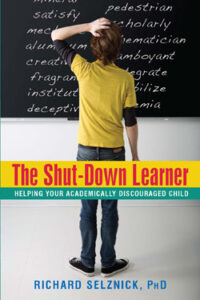“Beyond the Power Struggle” (Structure & Leverage)
 As noted in the previous blog, with children showing challenging behaviors causing you tremendous stress, you were encouraged to adopt a mantra helping you remain in your center, as you speak one “Didja” (e.g., “Didja you do your homework?”) after another.
As noted in the previous blog, with children showing challenging behaviors causing you tremendous stress, you were encouraged to adopt a mantra helping you remain in your center, as you speak one “Didja” (e.g., “Didja you do your homework?”) after another.
The mantra (“They need structure; I need leverage.”) is meant to keep things simple.
Of course, each child and family situation are different, but from what I can tell the leverage with modern kids really comes down to one thing – their screen usage.
Screen access (in whatever form) is the ruling passion, therefore it’s your leverage.
As I note in my soon to be released new book (yay!!!), “Beyond the Power Struggle: A Guide for Parents of Challenging Kids,” without resorting to punishment you are encouraged to look at your child’s landscape of what they take for granted.
By about nine or ten or so, most kids have easy access to gaming systems, iPads, and many have their own phones.
For those children who are not sustaining mental effort, showing poor time management, ask yourself have they really earned the right to all of those screen distractions. Are they really supporting your child’s “executive function deficits?”
While they gorge on Fortnite, TikTok or YouTube, and while you are exhausted trying to get your child to complete schoolwork or to do some reading do you feel that things are out of whack?
My guess is the answer is a resounding, “Yes.”
Look at the family landscape. What’s the structure? Is it all one sided toward the child receiving pure pleasure while they give little in return?
Keep repeating, “They need structure! I need leverage.”
Feel free to make comment below. To receive future blog posts, register your email: https://shutdownlearner.com.
To Contact Dr. Richard Selznick for advice, consultation or other information, email – rselznick615@gmail.com.
 Copyright, Richard Selznick, Ph.D. 2023, www.shutdownlearner.com.
Copyright, Richard Selznick, Ph.D. 2023, www.shutdownlearner.com.

 Recently, 8-year-old Marty showed some signs of misbehavior when his mom exclaimed, “Boy, you’re in hot water now.”
Recently, 8-year-old Marty showed some signs of misbehavior when his mom exclaimed, “Boy, you’re in hot water now.”
 One of my favorite kids, Marla, age 6, came in to see me.
One of my favorite kids, Marla, age 6, came in to see me. “The world is passing through troublous times. The young people of today think nothing but of themselves. They have no reverence for parents or old age. They are impatient of all restraint. They talk as if they knew everything, and what passes for wisdom with us is foolishness with them. As for the girls, they are forward, immodest and unladylike in speech, behavior and dress.” (Peter the Hermit, circa 1250)
“The world is passing through troublous times. The young people of today think nothing but of themselves. They have no reverence for parents or old age. They are impatient of all restraint. They talk as if they knew everything, and what passes for wisdom with us is foolishness with them. As for the girls, they are forward, immodest and unladylike in speech, behavior and dress.” (Peter the Hermit, circa 1250) When you are a parent in struggling “Child Land,” there are all kinds of theories, hypotheses and explanations as to why children do what they do.
When you are a parent in struggling “Child Land,” there are all kinds of theories, hypotheses and explanations as to why children do what they do. As part of the assessment process, I always conduct an interview (usually with the mom) to get an overview of the issues of concern.
As part of the assessment process, I always conduct an interview (usually with the mom) to get an overview of the issues of concern. A favorite pastime of mine is watching how parents and their children interact. There’s never a shortage of blog material. For people watching, there’s not much better than cafes and casual restaurants where families tend to congregate.
A favorite pastime of mine is watching how parents and their children interact. There’s never a shortage of blog material. For people watching, there’s not much better than cafes and casual restaurants where families tend to congregate. Parents tell me stories.
Parents tell me stories. This week we turn our sights to a few disorders that may make it into the diagnostic manual upon its revision.
This week we turn our sights to a few disorders that may make it into the diagnostic manual upon its revision.